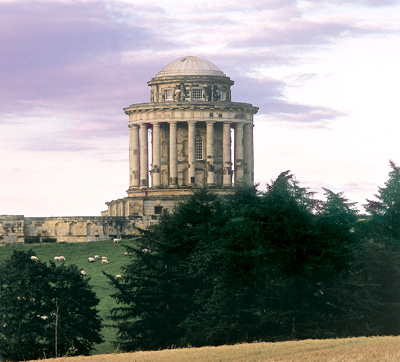Great British Architects: Nicholas Hawksmoor
Hawksmoor was unquestionably one of the three great architects of the English Baroque


Early career
Hawksmoor was probably born early in 1662 (the habit of dating new year from March 25 may explain the date on his monument of 1661) at East Drayton in Nottinghamshire. It is likely that he attended grammar school at nearby Dunham, and his first employment was as a judge’s clerk. At the age of 18, Hawksmoor travelled to London, where he became domestic clerk to Sir Christopher Wren, then Surveyor of the Works responsible for royal building projects.
In this role, Hawksmoor effectively served his apprenticeship and absorbed some of Wren’s interests. These included a fascination with architecture as an expression of geometry and an intellectual interest in using the literary descriptions of buildings in addition to the study of their remains as a source of architectural ideas.
Hawksmoor became steadily more involved in Wren’s wide responsibilities throughout the 1680s and 1690s. These included the reconstruction of St Paul’s Cathedral (where he served as the senior draftsman for more than 19 years from 1691), the reconstruction of the City churches after the fire of London, the construction of the Royal Naval Hospital at Greenwich after its foundation in 1694, and the remodelling of King William Court from 1699 to 1707. Over the same period, he also undertook independent work, notably a new house at Easton Neston in Northamptonshire, begun 1694.

Hawksmoor and Vanbrugh
By 1699, Hawksmoor had met Vanbrugh, a well-connected playwright who unexpectedly seized the two plum architectural projects of the ensuing decade: a new home for the Earl of Carlisle at Castle Howard, Yorkshire, and Blenheim Castle or Palace, Oxfordshire, erected in honour of the Duke of Marlborough’s military achievements.
Hawksmoor effectively served as Van-brugh’s lieutenant in the two projects. In the execution of both buildings, moreover, his experience as a draftsman and organiser of large-scale building works was to prove crucial. When Vanbrugh eventually fell out with the Duchess of Marlborough, Hawksmoor took responsibility for Blenheim. Universities and churches
Sign up for the Country Life Newsletter
Exquisite houses, the beauty of Nature, and how to get the most from your life, straight to your inbox.
In later life, Hawksmoor became involved in several architectural commissions for Oxford and Cambridge colleges. Many of these projects remained unrealised or in the case of the Sheldonian Library in Oxford passed to the responsibility of another architect and were adapted. His most important executed work was the remodelling of All Soul’s College, Oxford, begun in 1716, which he was able to supervise as he travelled to and from Blenheim. He also planned the large-scale redevelopment of both university towns along Roman lines with vistas, eye-catching buildings and monuments set in public spaces.
In 1711, Hawksmoor was jointly appointed to oversee the construction of new churches in the expanding suburbs of London. He designed six of the 12 that were completed, notably St Alfege, Greenwich, begun 1712, and Christ Church Spitalfields, begun 1714. When Wren was dismissed as Surveyor of Works in 1718, Hawksmoor was sidelined in the management of royal building projects. He was partly restored to influence in 1726, but never secured a senior Crown appointment.
Hawksmoor died from gout which he suffered from throughout his life in London in 1736 and was buried at Shenley, Hertfordshire, where his ledger stone survives.
Country Life is unlike any other magazine: the only glossy weekly on the newsstand and the only magazine that has been guest-edited by HRH The King not once, but twice. It is a celebration of modern rural life and all its diverse joys and pleasures — that was first published in Queen Victoria's Diamond Jubilee year. Our eclectic mixture of witty and informative content — from the most up-to-date property news and commentary and a coveted glimpse inside some of the UK's best houses and gardens, to gardening, the arts and interior design, written by experts in their field — still cannot be found in print or online, anywhere else.
-
 Vertigo at Victoria Falls, a sunset surrounded by lions and swimming in the Nile: A journey from Cape Town to Cairo
Vertigo at Victoria Falls, a sunset surrounded by lions and swimming in the Nile: A journey from Cape Town to CairoWhy do we travel and who inspires us to do so? Chris Wallace went in search of answers on his own epic journey the length of Africa.
By Christopher Wallace
-
 A gorgeous Scottish cottage with contemporary interiors on the bonny banks of the River Tay
A gorgeous Scottish cottage with contemporary interiors on the bonny banks of the River TayCarnliath on the edge of Strathtay is a delightful family home set in sensational scenery.
By James Fisher